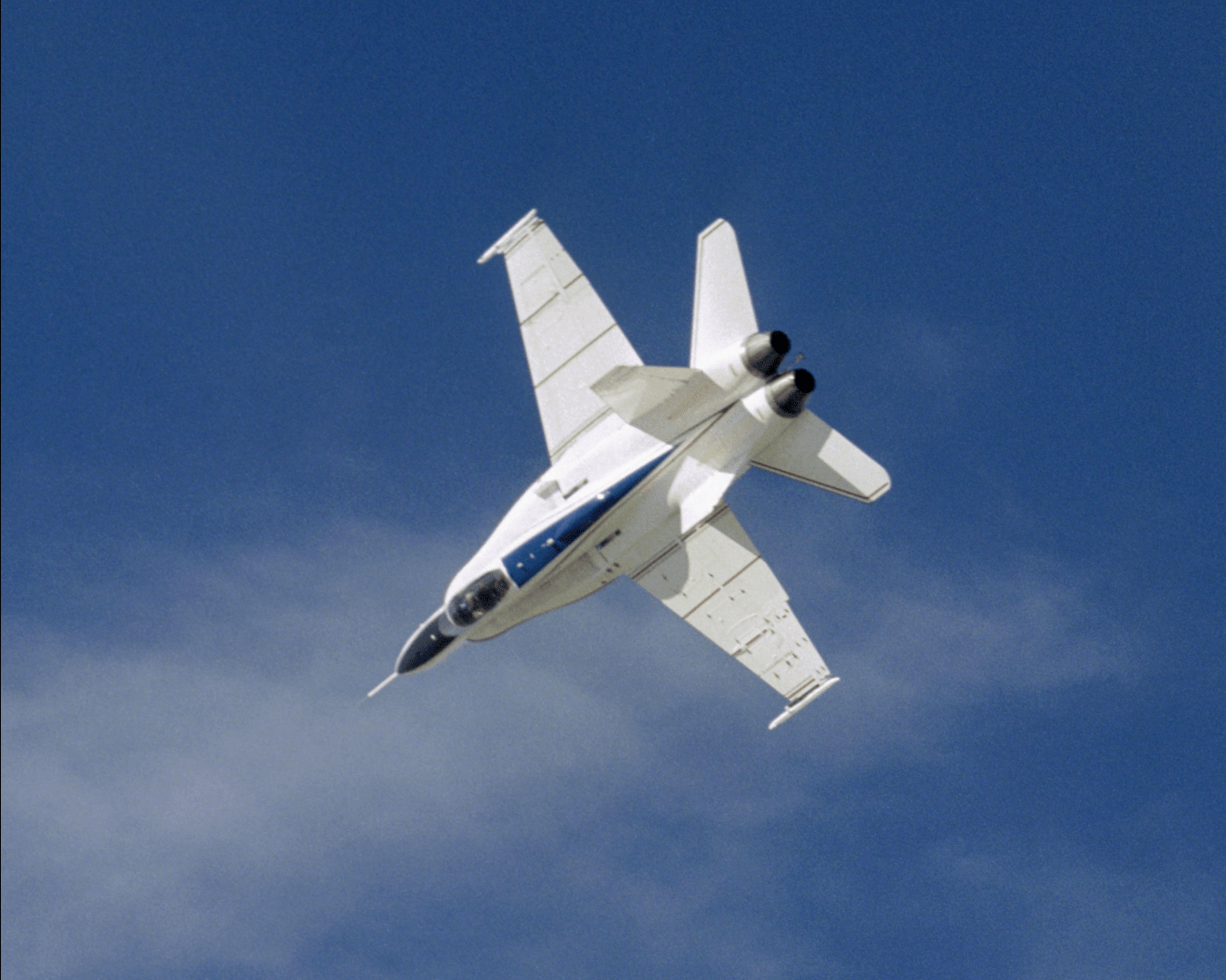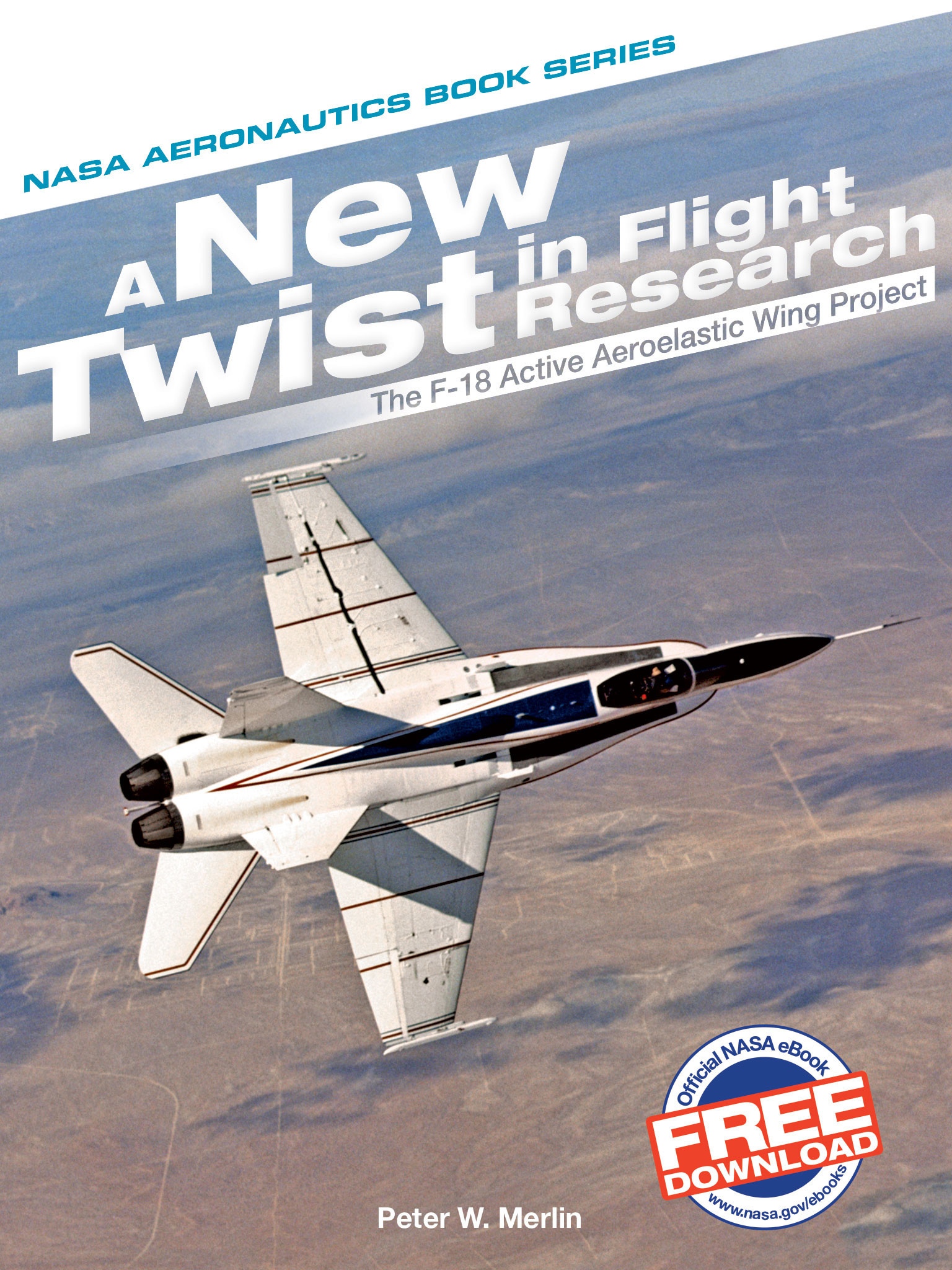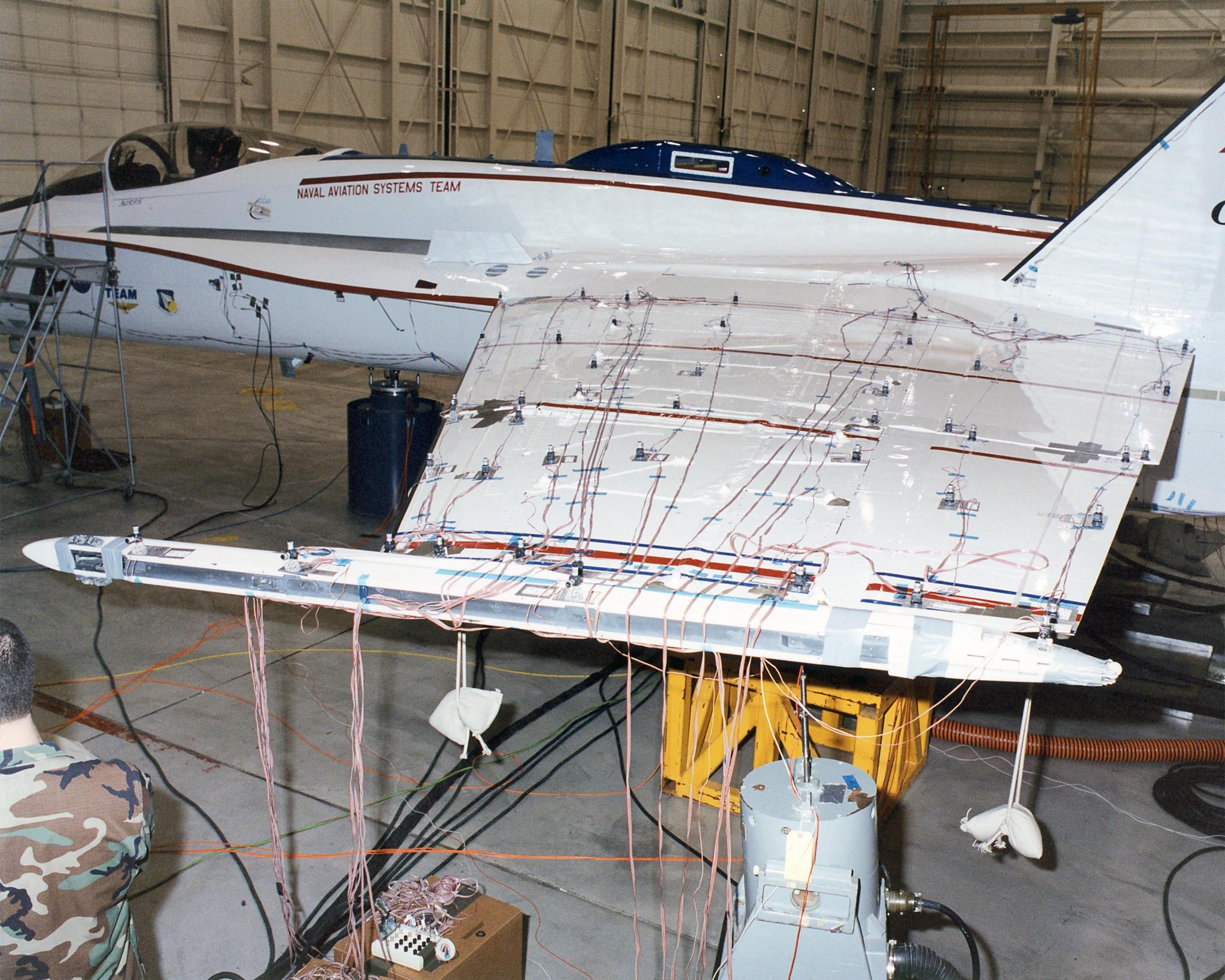Sometimes the inspiration for innovative technological solutions comes from unexpected places.
That’s one of the key messages author Peter Merlin hopes readers will take away from reading NASA’s newest book in its Aeronautics Book Series, “A New Twist in Flight Research: The F-18 Active Aeroelastic Wing Project.”
In this case the inspiration for the test project involving an F-18 with “elastic” wings came from no less than the world’s first airplane – the 1903 Wright Flyer, which in turn saw its design based on observations of birds in flight dating back to the time of Leonardo da Vinci.
That first airplane didn’t sport the same kind of control surfaces, such as flaps and ailerons, that today’s airplanes rely on to steer through the air. Instead, just like birds, the Wright Flyer twisted its wings to change its direction in flight.
A century later, designers wondered if maybe the birds and the Wright brothers were on to something worth exploring with modern technology. The result was the F-18 Active Aeroelastic Wing (AAW) project
NASA’s new 194-page book tells the story of that flight research project, which saw an F-18 supersonic fighter modified so its wings could be warped in flight to aid in steering. It made 96 flights in two phases between November 2002 and April 2005.
“AAW technology is sort of a ‘back to the future’ approach to aircraft design,” Merlin said. “It leverages structural flexibility and the strength of new lightweight composite materials for a net benefit with regard to aircraft maneuverability.”
“A New Twist in Flight Research” summarizes the story in a way that is approachable to a general audience. Yet it also is filled with enough technical detail to be useful for engineering students, course instructors, and aircraft designers.
“Really, anyone with an interest in the history of aeronautics and the future of aircraft design will enjoy this book,” Merlin said.
As NASA’s other books in the same series are, “A New Twist in Flight Research” is available online at no cost as an e-book, while printed versions of the book may be purchased from NASA’s Information Center.
Publication of “A New Twist” was sponsored and funded by the communications and education department of NASA’s Aeronautics Research Mission Directorate.




































